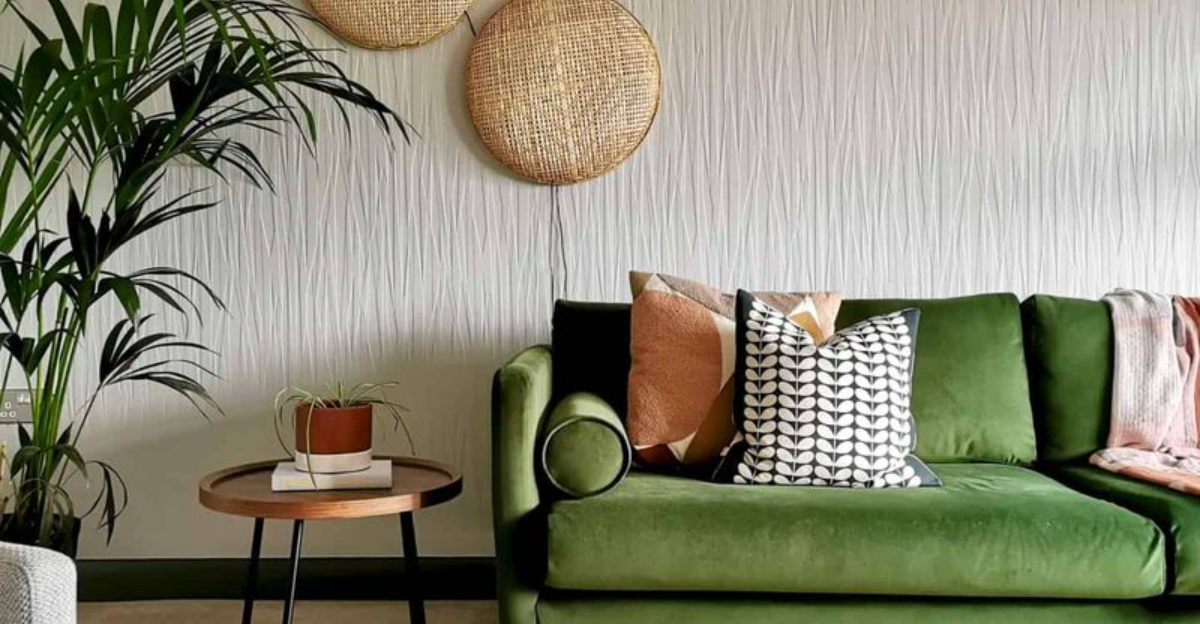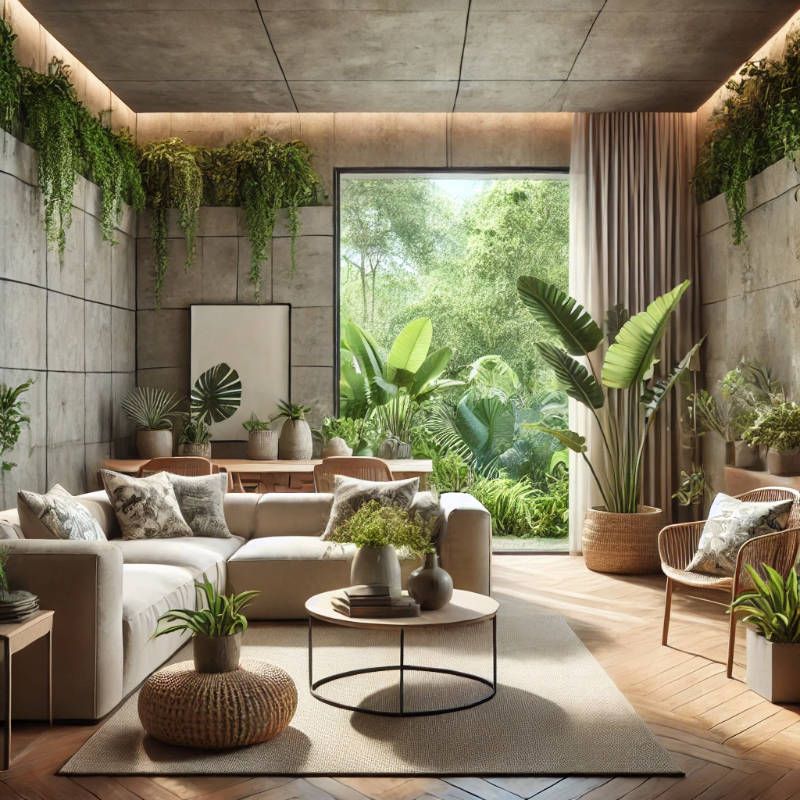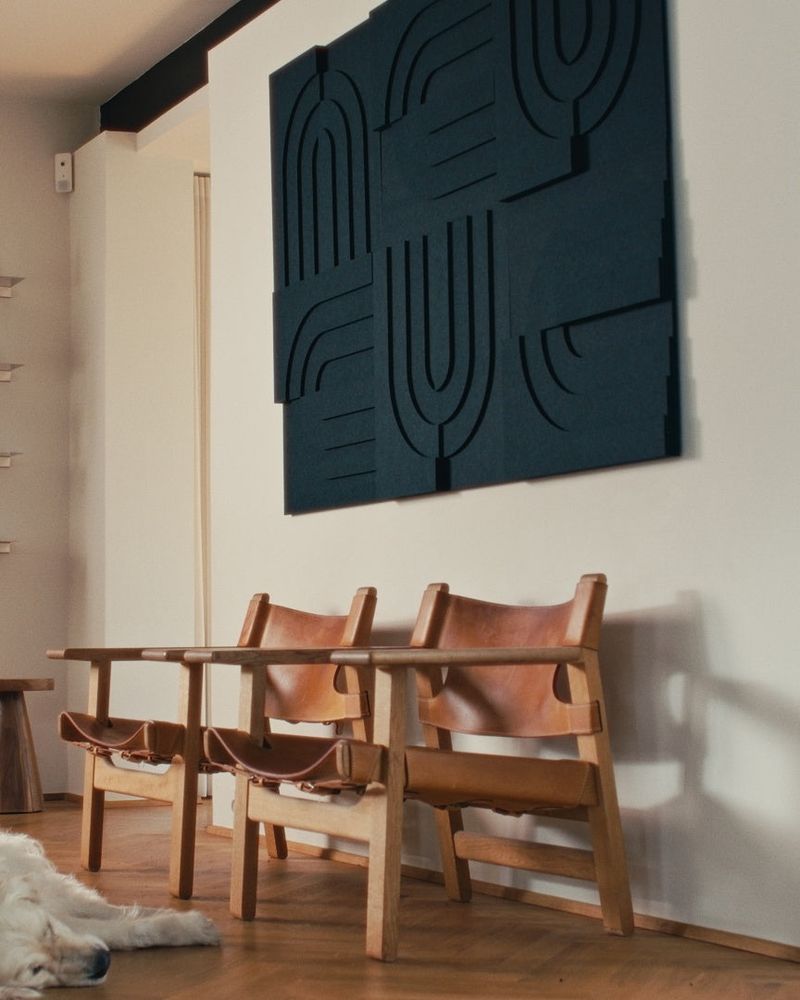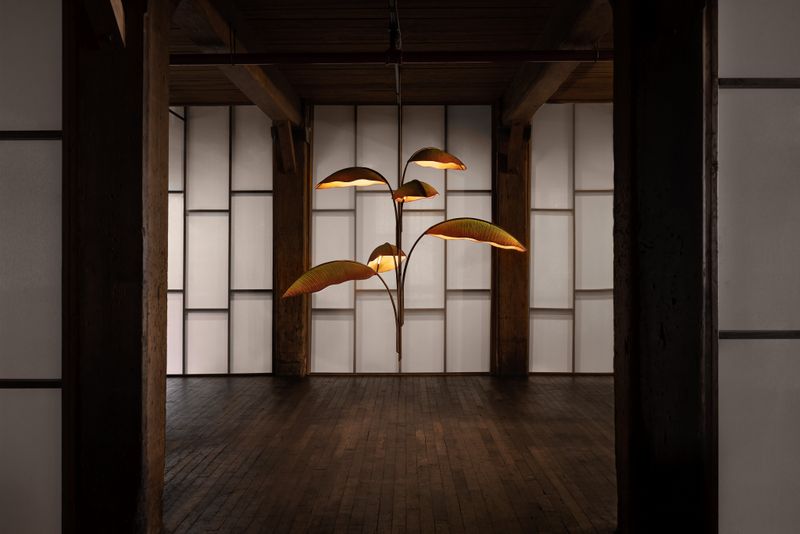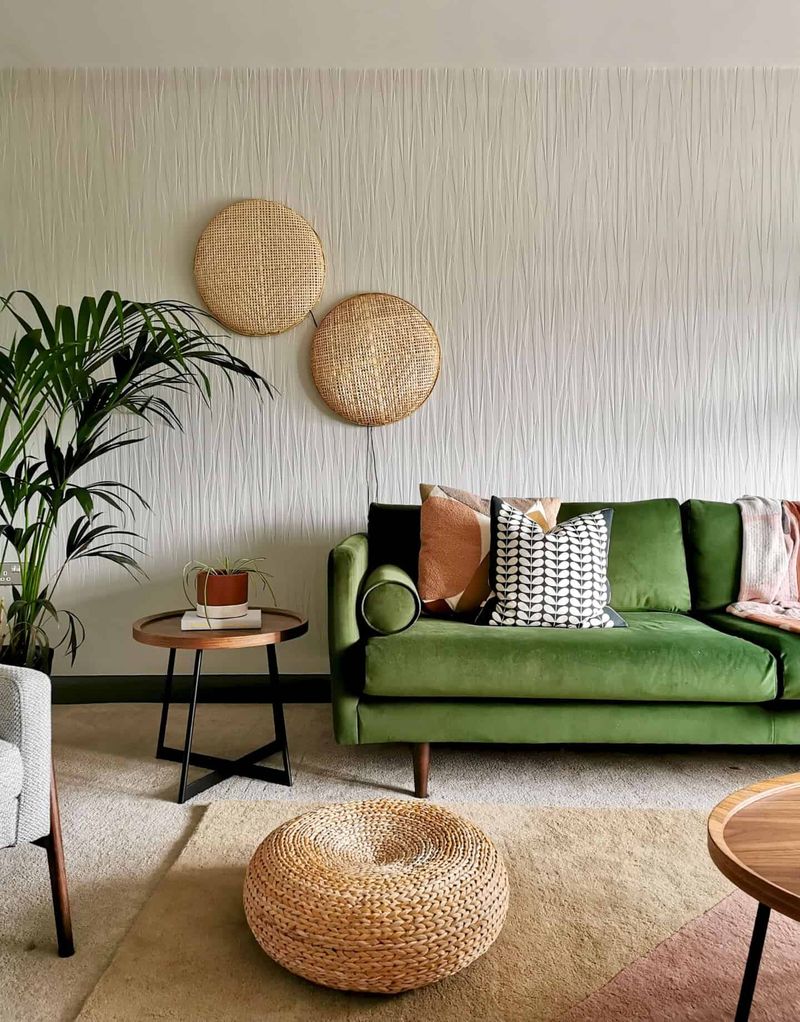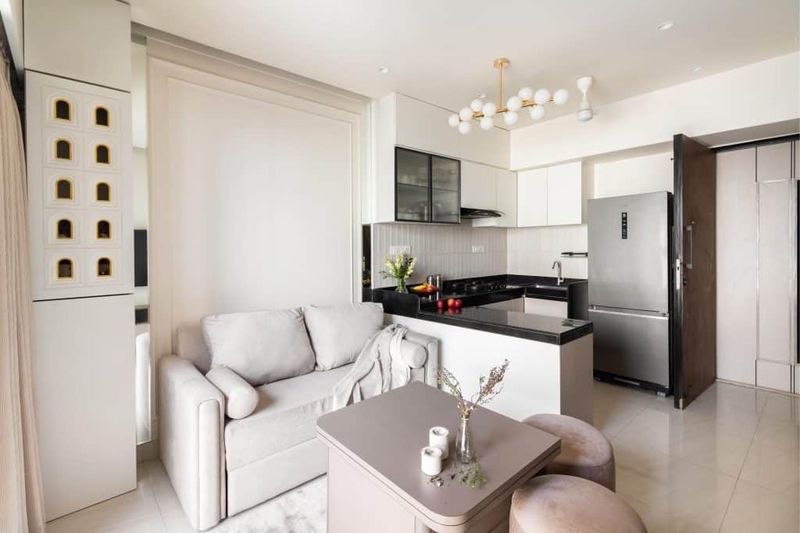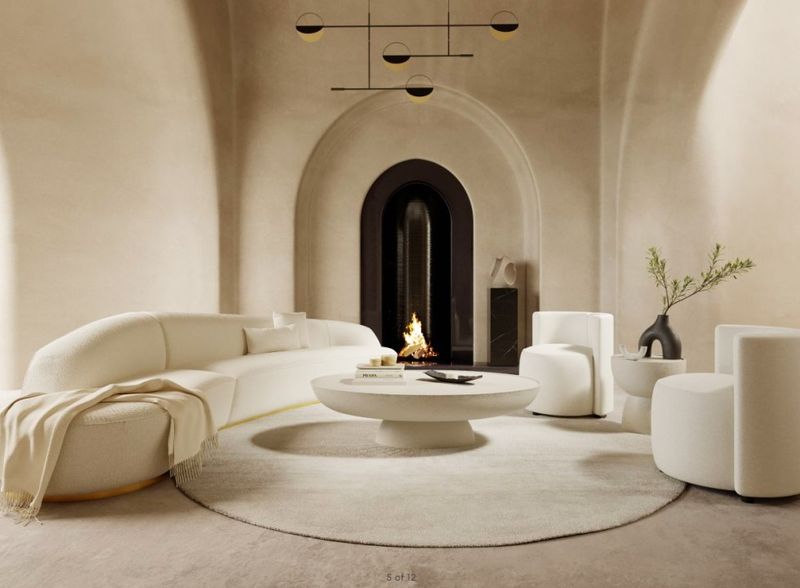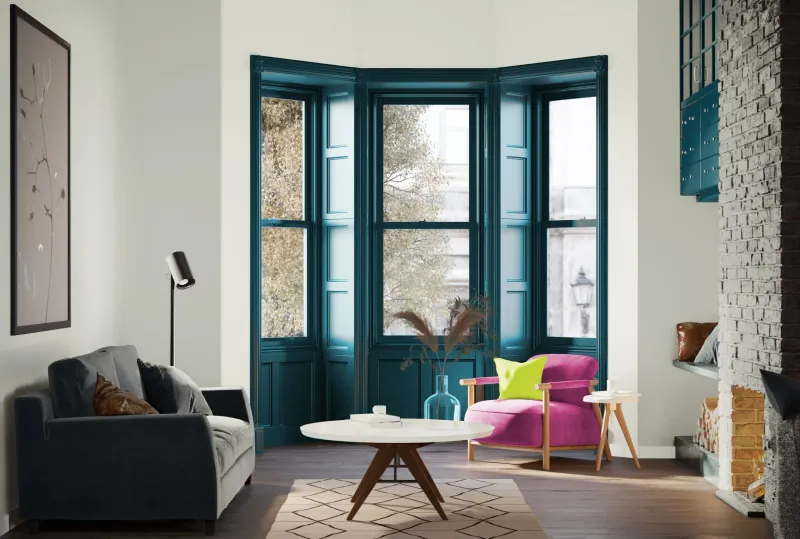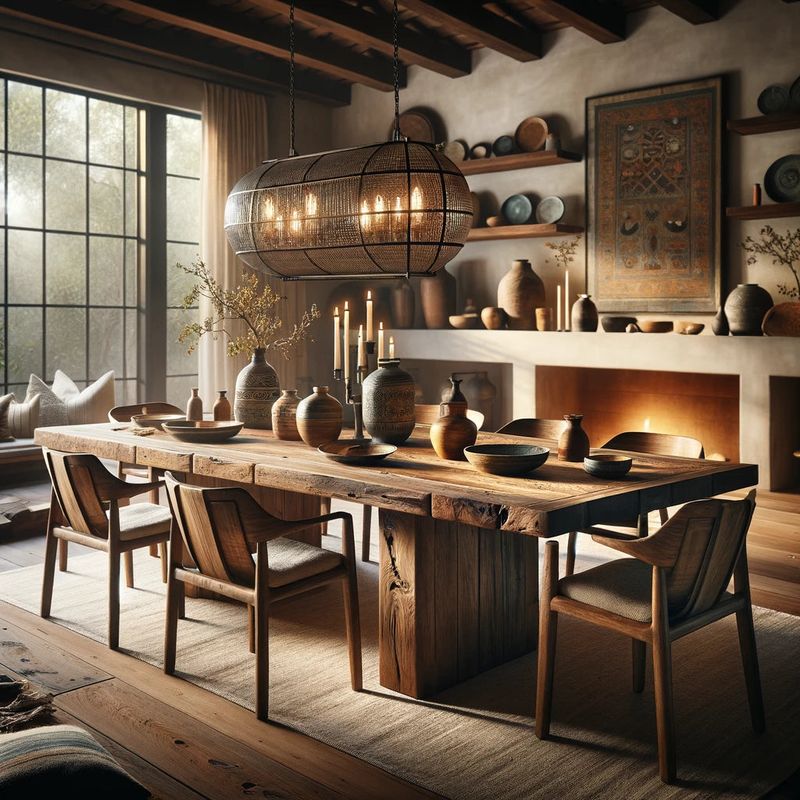Interior design is shifting fast in 2025, and the trends gaining momentum are anything but boring. Spaces are becoming bolder, more personal, and more textured – with designers leaning into comfort, creativity, and character like never before.
If you’re planning a refresh or just love staying ahead of the curve, now’s the perfect time to see where things are headed.
Check out these 10 trends which are set to dominate by the end of the year, plus 5 more that are already turning heads and shaping how we decorate our homes right now.
1. Biophilic Design Integration
Ever noticed how being surrounded by nature instantly lifts your mood? Biophilic design brings the outdoors in through living walls, natural materials, and abundant plant life.
Homeowners are increasingly installing indoor garden systems, moss walls, and even water features. This nature-focused approach improves air quality while reducing stress and boosting creativity.
2. Japandi Evolution
What happens when Japanese minimalism meets Scandinavian coziness? Magic! Japandi style is evolving beyond its original form with deeper cultural influences from both regions.
Expect to see more handcrafted items, wabi-sabi appreciation of imperfection, and natural materials like bamboo and light woods. The color palette expands slightly to include muted sage greens and soft terracottas while maintaining that serene, uncluttered feel.
3. Regenerative Materials
Beyond merely sustainable, regenerative materials actually improve the environment during their production. These revolutionary options are quickly becoming the gold standard in eco-conscious design.
Mycelium (mushroom-based) furniture, carbon-negative concrete alternatives, and textiles made from agricultural waste lead the way.
4. Neo-Art Deco Revival
The Roaring Twenties are back – with a modern twist! This contemporary take on Art Deco incorporates the glamour of the 1920s while updating it for today’s sensibilities.
Curved furniture, bold geometric patterns, and metallic accents remain, but with more sustainable materials and subdued applications.
5. Acoustic Design Elements
Shhhh… can you hear that? It’s the sound of silence, deliberately engineered into your living space! With open floor plans and hard surfaces dominating homes, acoustic comfort is becoming a top priority.
Decorative sound-absorbing panels that double as art, noise-reducing curtains, and sculptural diffusers are appearing in stylish homes everywhere. These elements manage sound while serving as beautiful design features rather than utilitarian afterthoughts.
6. Grandmillennial Goes Global
Remember when your grandmother’s style made a comeback? Now it’s going worldwide! The cozy, nostalgic Grandmillennial trend is expanding to embrace vintage elements from cultures around the globe.
Chinese chinoiserie mixes with French toile and Mexican embroidery for a worldly yet familiar feel. This maximalist approach celebrates handcrafted traditions with modern sensibilities, creating spaces that feel both cultured and comfortable – like a well-stamped passport translated into interior design.
7. Sculptural Lighting as Art
Illumination is stepping into the spotlight! No longer just functional necessities, lights are becoming the main artistic focal points in rooms. Oversized, sculptural fixtures that command attention even when switched off are defining spaces.
These statement pieces often tell stories through their design, becoming conversation starters that literally and figuratively illuminate a room.
8. Wellness Rooms
Who needs a spa when you have a dedicated wellness space at home? The pandemic-inspired focus on health has evolved into permanent wellness rooms in residential design.
These spaces combine elements for physical and mental wellbeing—meditation corners, workout areas, air purification systems, and circadian lighting. Materials are selected for their non-toxic properties, while colors and textures promote relaxation and rejuvenation in these personal sanctuaries.
9. Hyper-Local Design
Your zip code is becoming your design inspiration! Hyper-local design celebrates the immediate surroundings of a home, incorporating elements specific to the neighborhood, city, or regional landscape.
Local materials, artisans, and references to nearby landmarks or natural features create spaces that couldn’t exist anywhere else. This approach reduces carbon footprints while creating deeply authentic interiors that honor their location and support local economies and crafting traditions.
10. Interactive Sensory Experiences
Touch, hear, smell—design is engaging all the senses! Interactive elements that respond to human presence are creating multi-sensory home experiences beyond the merely visual.
Textured walls invite touch, scent diffusion systems change fragrance based on time of day, and responsive lighting shifts with movement. These features create immersive environments that change and adapt, making spaces feel alive and responsive to the people inhabiting them.
1. Mindful Minimalism
Less stuff, more meaning! Mindful minimalism goes beyond aesthetic simplicity to focus on the intentional curation of possessions with purpose and significance.
Each item earns its place through function, beauty, or emotional connection. Spaces feature carefully considered elements rather than bareness, creating rooms that feel both orderly and deeply personal.
2. Multifunctional Micro-Spaces
Small is the new big! As urban living spaces shrink, designers are creating ingenious solutions for compact areas that serve multiple purposes throughout the day.
Murphy beds that transform into office desks, kitchen islands that become dining tables, and closets that convert to meditation nooks are just the beginning. The focus is on quality over quantity, with each square foot working double or triple duty.
3. Curved Architecture
Say goodbye to sharp corners! Organic, flowing forms are replacing rigid lines in interior architecture, creating spaces that feel more natural and embracing.
Arched doorways, rounded wall corners, curved staircases, and circular room designs are appearing in new constructions and renovations. This softening of traditional angles creates visual interest while improving flow between spaces.
4. Heritage Color Palettes
Looking to the past is painting the future! Historical color combinations are making a sophisticated comeback, with each palette telling a story from a specific era or cultural tradition.
Victorian jewel tones, Mid-century modern combinations, and traditional color schemes from various global cultures are being researched and thoughtfully applied.
5. Handcrafted Statement Pieces
In a world of mass production, the human touch stands out! Single, showstopping handcrafted items are becoming the centerpieces around which entire rooms are designed.
A massive hand-carved wooden dining table, an intricate ceramic wall installation, or a one-of-a-kind woven tapestry commands attention while everything else plays a supporting role.

